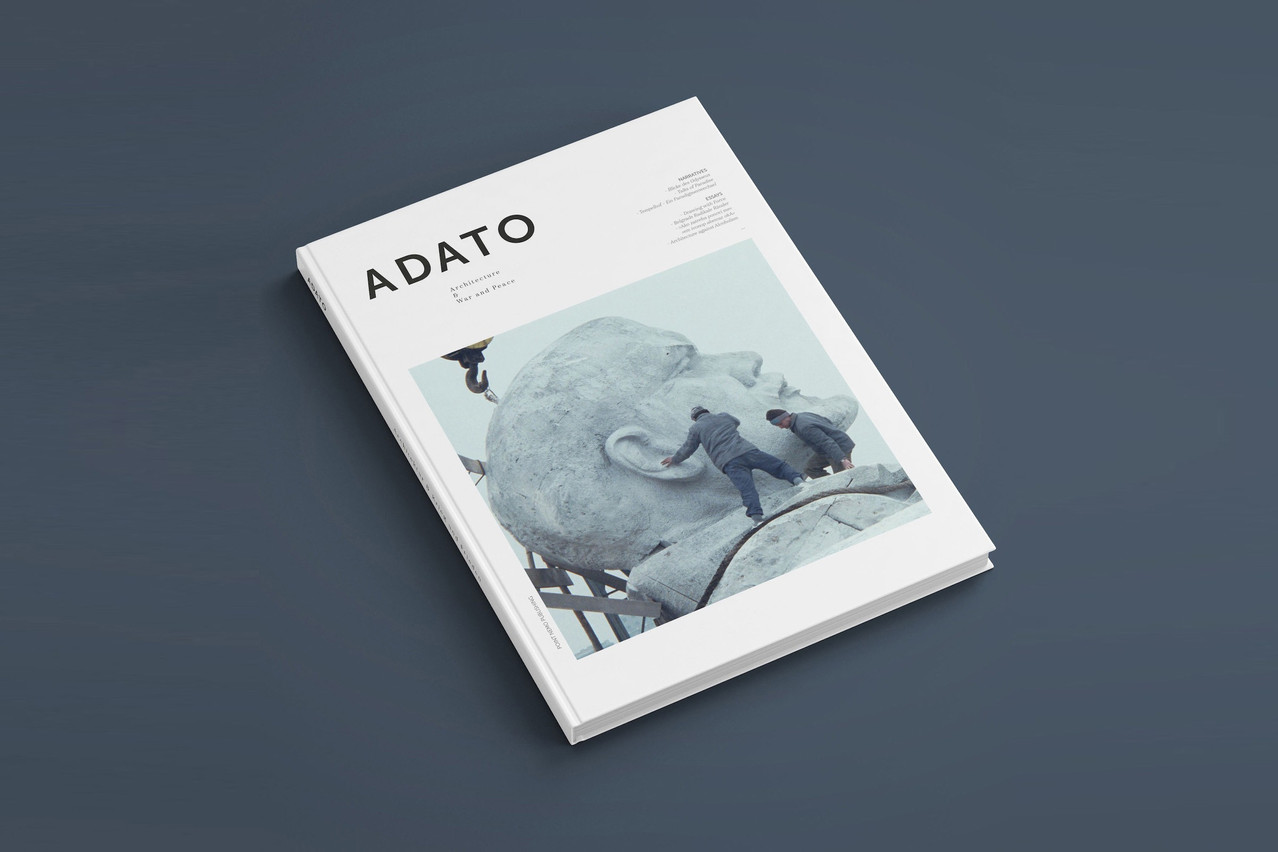ADATO was launched as a magazine but has graduated into a book series, with this new title—Architecture, War & Peace—being the first to be released in hardcover.
The issue’s theme was chosen before the invasion of Ukraine by the Russian military, yet because of these events has ended up timely nonetheless. “This issue’s topic became way too real,” commented Anna Valentiny, director of the series’s publishing house Point Nemo.
“We are shocked by the developments in Ukraine—speechless,” she continued. “Despite the catastrophe of the real war, we have decided to dare to deal with the topic of ‘war and peace’.”
Inside this issue
Architecture, War & Peace contains two pieces in English. One of them, “Drawing with Force” by Dominik Strzelec, is a theoretical and even poetic contemplation of tracing and divination in architecture.
The other is an essay called “Ako zatreba ponovi me / em ivonop abertaz okA”—translating to “If need be, repeat me” followed by the same letters in reverse order, making a palindrome—in which architect and artist Benjamin Softić discusses the commemorative Spomeniks (monuments) designed and installed in Yugoslavia after the Second World War.
In unpacking the complex politics underpinning the prompt for these designs, Softić shows how the monuments were meant to achieve an impossible duality: they were to represent a specific governmental narrative of a socialist and multiethnic society that was yet to come, while remembering lives lost during the war—yet they were also to be “non-symbolic” and “non-(socialist) realist” in style.
These loaded politics and the final (and often striking) forms of these Spomeniks proceed to spur a discussion of how the monuments were understood, and by whom, and in what era, ultimately spilling into an investigation of how the past, present and future are negotiated within one object.
For a taste of that discussion:
“However,” writes Softić, “the desire to produce an unambiguous memorability through an artificial trace of a memory is contradictory in itself. The trace cannot be artificially produced, and as such it cannot lead to authentic remembrance. Memory (or the apparent ‘truth’) revealed by architecture as a trace of an event is therefore always an un-truth, or myth—open for any narrative and not predefined.”
Beyond the academic and investigative merit of the essay, its construction on the page is also carefully patterned with photos, captions and citations, which brings a typographical architecture to its own form.
ADATO will be available in bookshops in Luxembourg as well as on the publisher’s website.
